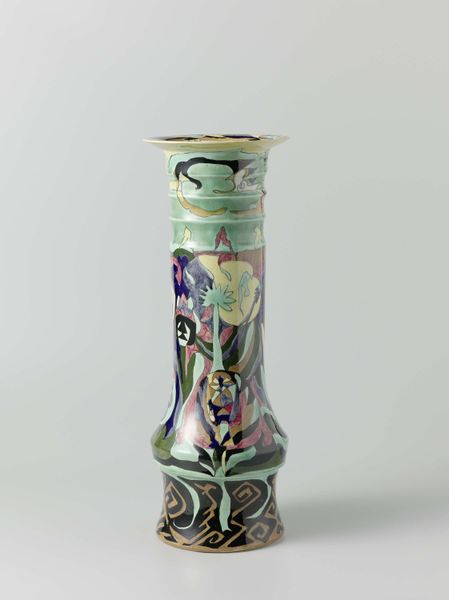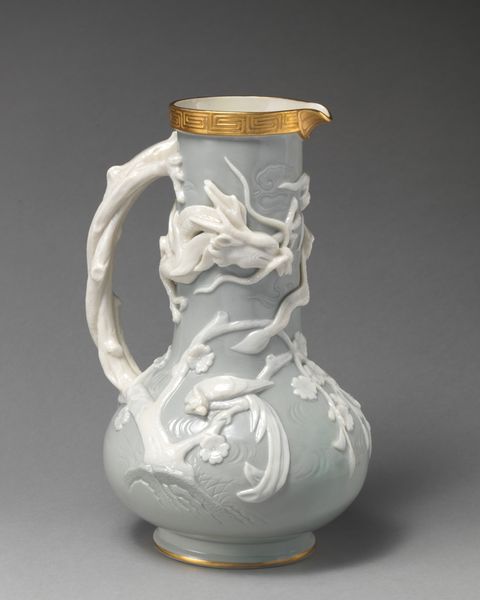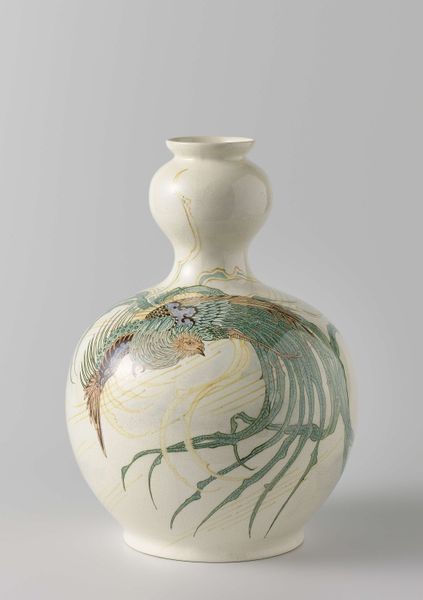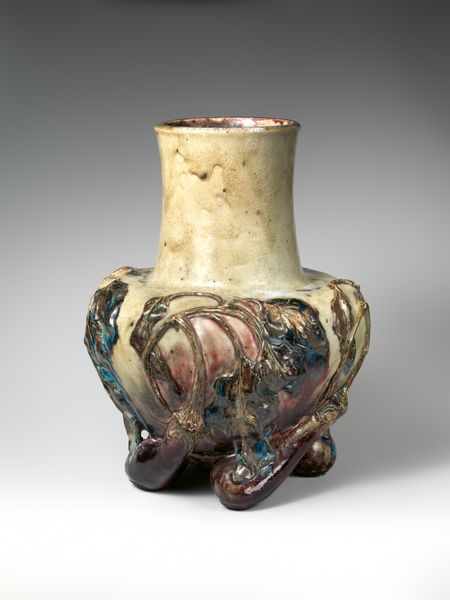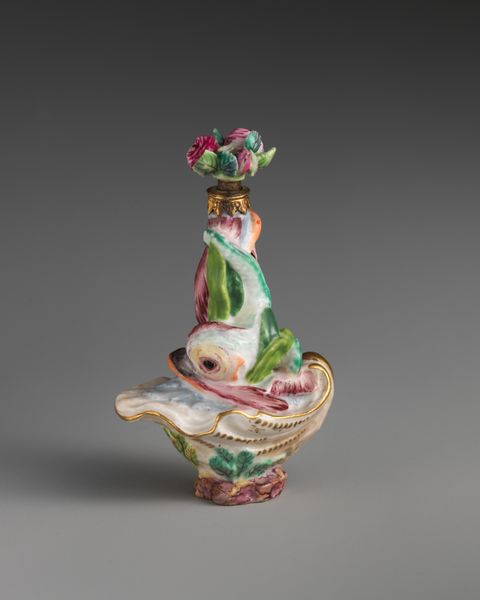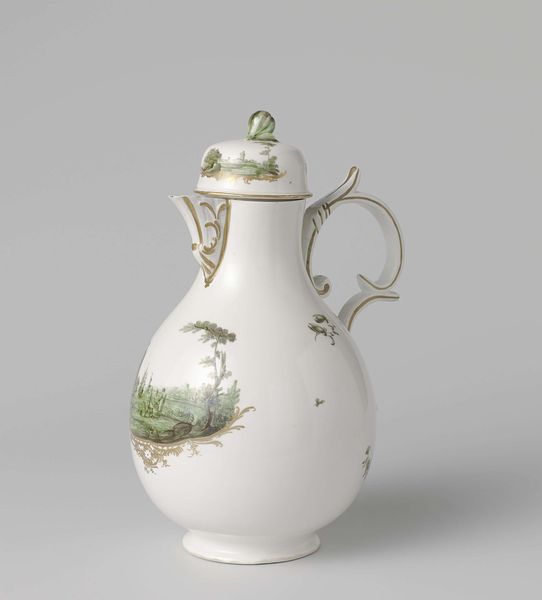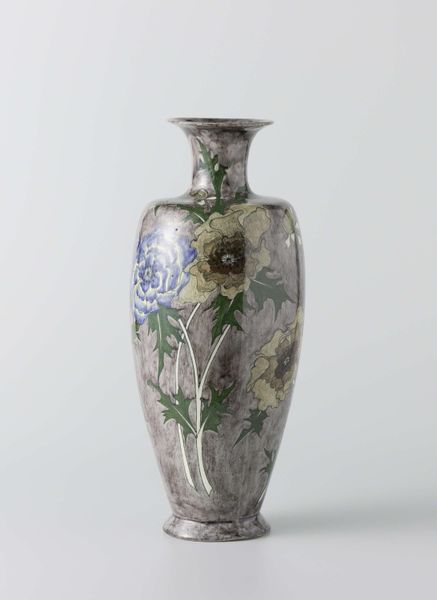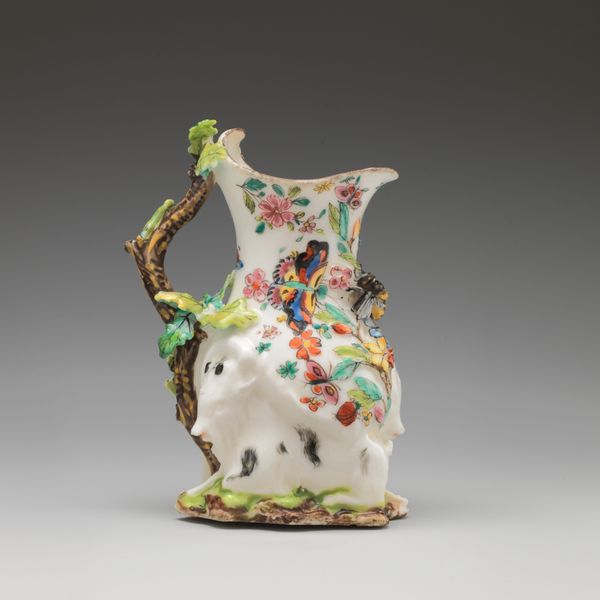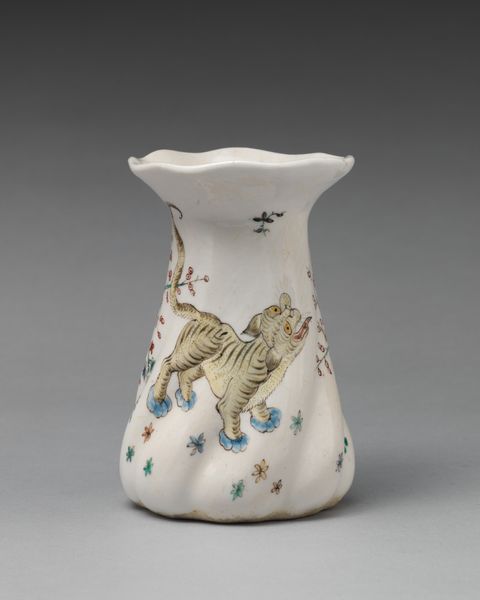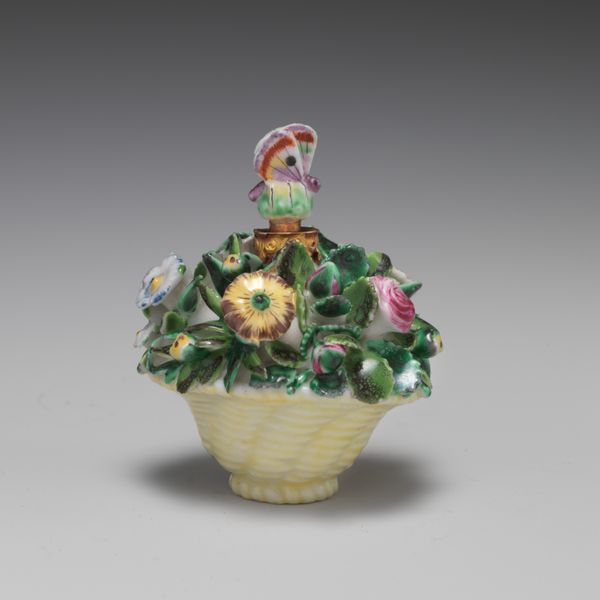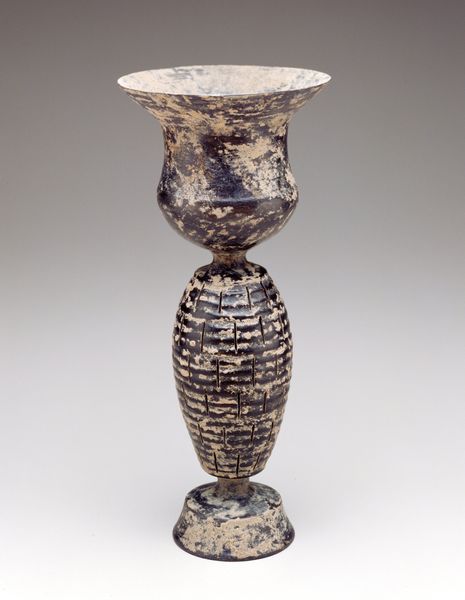
ceramic, porcelain, sculpture
#
ceramic
#
porcelain
#
figuration
#
sculpture
#
ceramic
#
decorative-art
#
rococo
Dimensions: Height: 10 1/4 in. (26 cm)
Copyright: Public Domain
Editor: Here we have a porcelain vase, made by the Chelsea Porcelain Manufactory between 1756 and 1760. I find the...constructed, artificial, almost cage-like structure so curious, contrasting with the naturalistic elements like the ducks. What do you see in this piece, beyond its obvious decorative function? Curator: I see a confluence of power, privilege, and the artificial constructs of "nature." These porcelain objects, symbols of Rococo extravagance, were products of intense colonial exploitation, weren't they? Editor: Colonial exploitation? How so? Curator: Well, porcelain itself depended on kaolin clay, often sourced through exploitative trade routes. The very act of transforming earth into such refined art speaks to a cultural obsession with dominating and shaping the natural world. Think about the ducks—they're cute, but they are frozen. Are they symbols of domesticated nature for aristocratic pleasure? Editor: So, you're saying the vase isn't just a pretty object, but also a reflection of the power dynamics of the time? Curator: Absolutely! It reveals how intertwined aesthetics were with socio-economic and political realities. Look at how these porcelain objects, in their delicate fragility, were signifiers of immense wealth and a disregard of resources. Editor: That gives me a lot to think about. It really does change how I see this vase – less pretty decoration and more social statement. Curator: Exactly! Now, we might even ask ourselves: how does the display of such artifacts in museums today further reinforce—or challenge—these historical power dynamics?
Comments
No comments
Be the first to comment and join the conversation on the ultimate creative platform.

